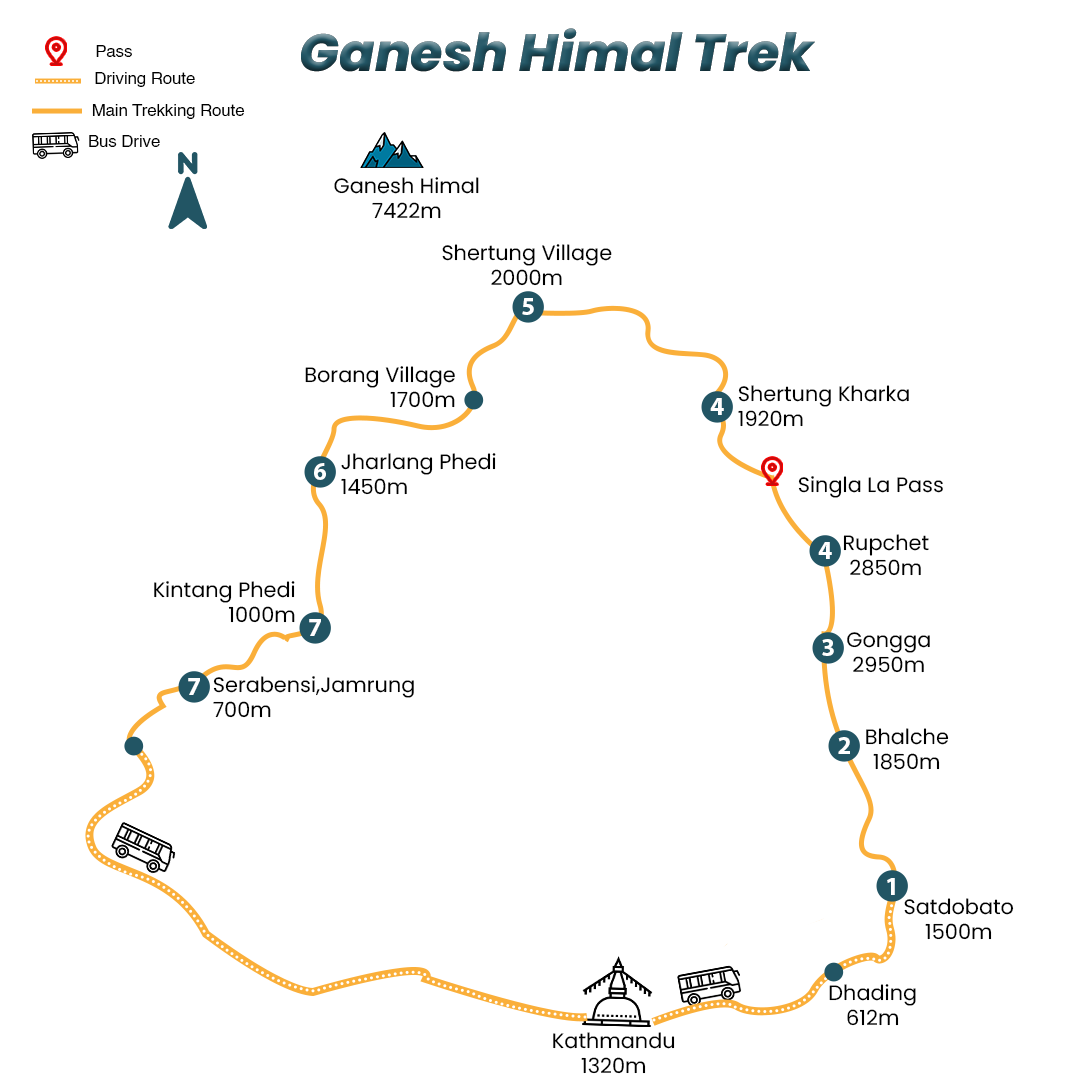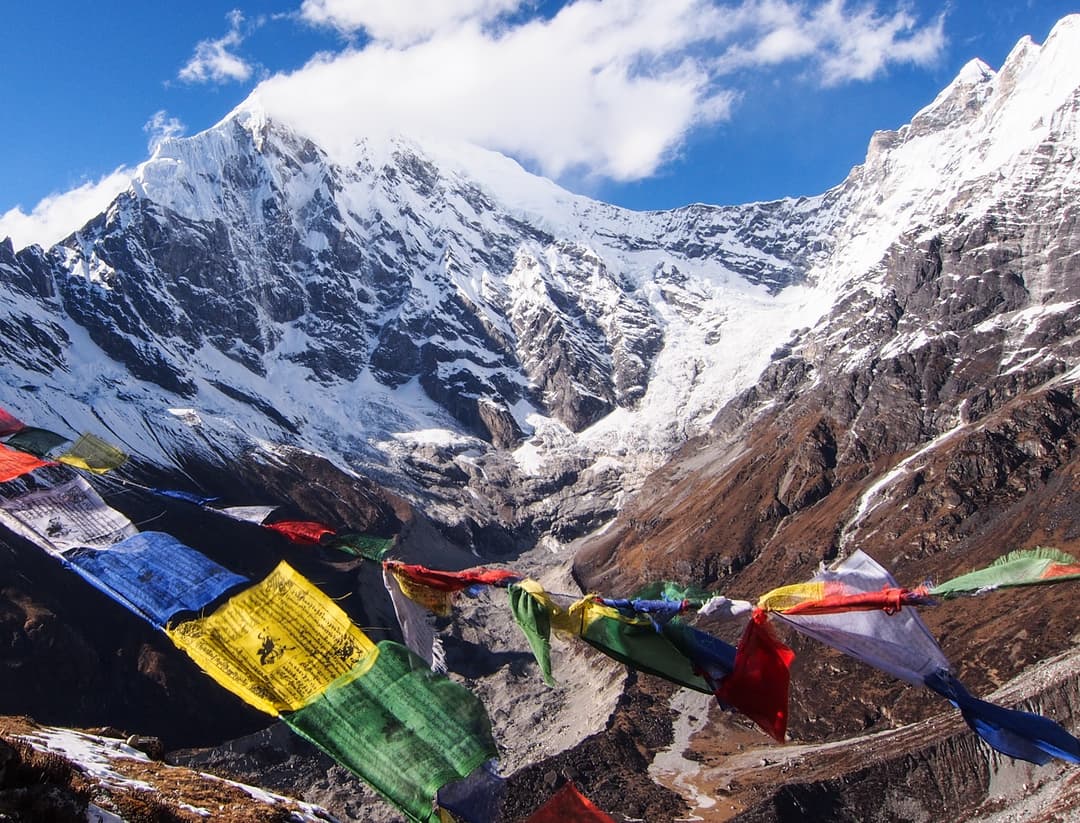Looking for an adventure that's off the beaten path? Consider the Ganesh Himal Trek, offered by Himalaya Land Treks. While many trekkers flock to the Everest and Annapurna regions, the Ganesh Himal offers a unique and stunning Himalayan journey that can be enjoyed in solitude.
Located at the Dhading-Gorkha border and bordering the Langtang, Shringi, and Mansiri Himalayan Ranges, the Ganesh Himal (7,422m) is sometimes called the "Ruby Valley" due to the large deposits of ruby ore in the area. The region is home to the Tamang people and their ancient, unadulterated culture.
Starting at Satdobato in the Dhading district, the trail leads through lush green forests to the hamlet of Gongga, crossing the Bhalcheen route. The trek continues through the outskirts of the Manaslu Conservation Area to Rupchet and over the Singla La Pass (4045m) to Shertung Kharka.
After ascending to the hamlet of Shertunga, the trail once again passes through lush forests to reach Jharlang Phedi and Kintang Phedi before arriving at Jamrung, where you can take a day off to tour the local community and learn about the unique way of life in the Ganesh Himal region. From there, we make our way to Sukaura and board the bus back to Kathmandu.
Himalaya Land Treks has been providing treks and adventure experiences in Nepal for over a decade. We offer a variety of trekking packages suitable for adventure lovers, so be sure to check them out. Join us for an unforgettable journey through the stunning Ganesh Himal region.
Best Time for Ganesh Himal trek
The best time for the Ganesh Himal trek is during the spring (March to May) and autumn (September to November) seasons. These months offer the most favorable weather conditions for trekking in the Ganesh Himal region.
During spring, the weather is generally clear, and the temperatures are mild, making it a pleasant time for trekking. The spring season also brings blooming rhododendron forests, adding vibrant colors to the landscape.
Autumn is another excellent time for the Ganesh Himal trek. The weather remains stable, with clear skies and moderate temperatures. The autumn months are particularly popular among trekkers due to the spectacular mountain views and the favorable trekking conditions.
It's worth noting that the Ganesh Himal region can be visited throughout the year. However, winter (December to February) brings cold temperatures and heavy snowfall, making trekking more challenging and limiting accessibility to some higher-altitude areas. Similarly, the monsoon season (June to August) experiences heavy rainfall, which can result in slippery trails and leech-infested areas, making it less favorable for trekking.
To make the most of your Ganesh Himal trek, it's advisable to plan your trip during the spring or autumn seasons. It's also recommended to check the local weather conditions and consult with local trekking agencies for the most up-to-date information before embarking on your adventure.
How Difficult is Ganesh Himal Trek?
The difficulty level of the Ganesh Himal trek can vary depending on several factors, including the route chosen, your fitness level, and previous trekking experience. Here is a general overview of the difficulty level associated with the Ganesh Himal trek.
The Ganesh Himal trek is considered to be a moderately challenging trek. It involves walking on mountainous terrain with varying elevations and uneven trails. The difficulty level can be influenced by factors such as your fitness level, previous trekking experience, and the specific route you choose.
The trek includes ascents and descents on steep paths, which can require a good level of physical fitness and stamina. The trail can be rugged and rocky at times, requiring careful footing and balance. Some sections of the trail may also involve crossing rivers or streams, adding an additional challenge.
One of the factors that contribute to the moderate difficulty level of the Ganesh Himal trek is the altitude. The trek takes you to higher altitudes, reaching up to around 4,600 meters (15,091 feet) at Pangsang Pass. As you ascend to higher elevations, the air becomes thinner, and the risk of altitude sickness increases. Proper acclimatization and awareness of altitude-related symptoms are crucial for a safe and enjoyable trek.
While prior trekking experience is not mandatory, having some level of fitness and hiking experience can be beneficial. Regular exercise, such as cardiovascular activities and strength training, can help prepare your body for the demands of the trek. It's also recommended to consult with experienced trekking agencies or local guides who can provide detailed information about the specific route, current trail conditions, and any potential challenges.
Alternative Treks
The Langtang Gosaikunda Trek combines the breathtaking Langtang Valley with the sacred Gosaikunda Lake, creating a rewarding and diverse trekking experience. The trail takes you through lush forests, charming villages, and scenic valleys, offering stunning views of the Langtang Himalayas.
The Langtang Valley Trek is a classic and picturesque journey that takes you through the Langtang region, known for its stunning landscapes and rich cultural heritage. The trail passes through lush forests, glacial moraines, and traditional Tamang villages, providing breathtaking views of the snow-capped peaks.
The Helambu Trek is a scenic and culturally rich trek that takes you through the beautiful Helambu region, located north of Kathmandu Valley. The trail traverses through terraced fields, dense forests, and traditional Sherpa and Tamang villages, allowing you to experience their unique lifestyle and traditions.






